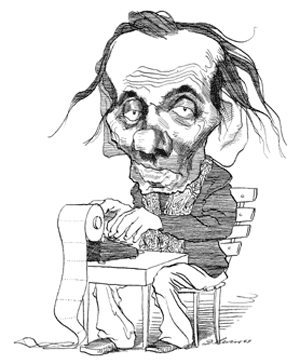There can be no doubt about the historical importance of Louis-Ferdinand Céline in the literature of anarchistic revolt. He was the first great foul-mouthed rhapsodist of the twentieth century to proclaim a satanic vision of the godless world, rolling helplessly through space and infested with crawling millions of suffering, diseased, sex-obsessed, maniacal human beings. Voyage au bout de la nuit, which appeared in 1932, was not simply a continuation of the pessimistic literature of the nineteenth-century “realists.” It was Zola-esque in its blackness, but it had a frenzy, a speed, and a virulence which made the average Zola novel suddenly seem almost as old-fashioned as a horse-drawn bus. Zola had toyed with the idea of using the working-class vernacular as a medium for the expression of social reality, as had Jean Richepin and a number of minor satirical poets, but no one before Céline had exploited the figurative obscenities and racy syntax of the spoken language in such a thoroughgoing and masterly fashion. It was as if the underdog had suddenly found a voice.
Céline’s anti-hero, the penniless disreputable slum-doctor, Bardamu, was a sort of eloquent Caliban, expressing the nether side of civilization. The effect was as startling in the Thirties as that of the comparable cry of revolt in the Forties and Fifties by Jean Genet, who also emerged suddenly from the anonymous mass, this time to proclaim a complete subversion of “normal” values in the name of the criminal, homosexual outcast.
Since nothing is ever absolutely new, Céline would probably not have been what he was without the French tradition of revolt, which one can trace back almost as far as one likes—through the Surrealists (with whom he was contemporaneous, although he appears to have had no dealings with them) to Jarry’s Ubu Roi and to Rimbaud, to the Romantic movement, to the Marquis de Sade and the other révoltés of the eighteenth century, such as the hero of Diderot’s Neveu de Rameau, to the scurrilous and picturesque writers of the seventeenth century, to Rabelais in the sixteenth and Villon in the fifteenth. God-defiance or God-rejection, wild satirical exaggeration, scatological and pornographic hyperbole are not novel elements in French literature, but they have appeared with increasing density as each fresh wave of revolt has broken on the historical scene. Céline may not have absorbed much of this tradition consciously, but it was in the air he breathed. Also he had suffered the terrible shock of the First World War at the tender age of eighteen and had emerged from it with serious head-wounds, which caused chronic insomnia and may have permanently affected his personality. He admits to only one important immediate literary influence—the writings of Henri Barbusse, the author of Clarté and Le Feu, who had a similar impatient, erotic temperament but rather less force and staying power.
It would be interesting to know whether or not Henry Miller had actually begun writing his “Tropics” before he read Voyage au bout de la nuit; the very short letter he contributed to the special number of the periodical L’Herne devoted to Céline (1962) leaves the matter in some doubt. Yet the similarities between his books and Céline’s two major novels, the Voyage and Mort à crédit (1936) seem too striking to be explained merely as a coincidence, or as two separate manifestations of the Zeitgeist. One gets the impression that Céline pulled out some kind of stopper and released a flood of vituperative literature, which since his time has flowed as strongly in the English language as in French. The vengeful, apocalyptic note, which sounds first in Miller, then in Mailer, Kerouac, Baldwin, Ginsberg, etc., has also been characteristic of a great many of the younger British writers, although in England it has perhaps been heard more frequently in the theater than in the novel or poetry. I have lost count of the garrulous heroes who have stood on the British stage during the last twenty years or so and shouted their disgust with society and life in different varieties of the demotic. Whether they know it or not, Céline had a lot to do with the development of the poetics of paranoia, which they have illustrated so exhaustively.
This Issue
June 5, 1969






